Turning Stainless Steel Bolt Into Pneumatic Engraver
by AMbros Custom in Workshop > Tools
16020 Views, 124 Favorites, 0 Comments
Turning Stainless Steel Bolt Into Pneumatic Engraver



This Instructables is extremely close to me because it taught me a lot about my skills. At the beginning of this project, I thought making it without a lathe would be impossible but it's not and if you think you can then you definitely can. My habit is like if I planned to do something then sooner or later I am able to accomplish that task. Definitely, with a lack of tools, it's gonna take some more time but everything is doable with sheer determination and that's what I learned during this project. I love doing engraving but going for hammer and chisel engraving is not my cup of tea that's why in the past I have been using foredom engraver but it was extremely difficult to work with because the tool didn't have a very ergonomic design and buying an expensive engraver isn't an option for me so I go with a plan of making my own pneumatic engraver handpiece. You know what's the most satisfying thing during this project, it's when you turn on the compressor and that little piston moves back and forth in the cylinder and makes an impact on the bit so that you are able to engrave any metal. The working principle is quite simple and if you didn't have a lathe then probably this video tells you how you can make one for yourself. If you have some useful tips and tricks to share then do let me know in the comments section down below. So without further delay let's start this build.
Supplies
Following is the list of materials I used to build this pneumatic engraver. Definitely, if you have a lathe then the project is rather simple to make and you can avoid using bolt for the build, but if that's not the case then the bolt and nut is the only option for you to continue this build. The bolts I am using in this are actually provided by my friend who works in the dairy company and he told that there is some modification that needs to be done on pipe flange and these bolts are no longer required, so he gave them to me because he saw my nut ring video and hoping to convert something with these nuts and bolts. I wasted a few of them but glad that successfully able to make one from those bolts. Although grub screw and M8 allen bolt I already have in my drawer.
The design provided above suited best for my compressor. Since the car, inflator comes in various sizes so your design must be according to that. You can definitely change the size of the barrel and try using a 10 mm hole and by doing that you have a lot more power in the stroke.
- Stainless steel Bolt M16 or M20. (I use M20 since I got them but I recommend to have M16 bolt)
- Nut according to the Bolt 2 pcs
- M8 Allen Bolt for graver holder
- M3 grub screw for tightening the graver into the holder
- wood for the handle
- 4mm pneumatic pipe fitting
- High-speed steel blank 12 mm. (You can use the back of the drill bit also. You can use any other piece also but make sure it's a hardenable material since the hammer needs to move up and down to make a stroke so it's better to make it with hardenable material)
- Pneumatic pipe
Tools used:-
Tools I am mentioning over here are those which I used but the lathe is the tool that will ease this work.
- Hacksaw
- Flat file
- Angle Grinder
- Grinding wheel
- Lapping Disk
- Buffing wheel
- Buffing compound
Drilling the Holes















The first thing to do in this build is to drill two holes one for the front and the other is for the back. The front hole is used to mount the graver holder with the help of M8 threads and it's 25mm deep. The rear hole is a 12mm dia hole that acts as a cylinder inside which a piston moves back and forth. The reason for choosing bolt is because it already has threads at the outside and since we are not using lathe this will reduce our work to some extent.
To mark the point location I first tighten the nuts onto the bolt so that it will provide a holding location to the vise in the next operation. For the exact location of the drilled hole, I am using a center finding jig and mark the hole location, center punch it. Since I have to hold it into the vise from the back I need to remove those markings from the bolt for which I am using the file to make it clean so that it can sit flush onto the vise base. Then I drilled a 6.35 mm hole for M8 thread into the bolt.
Drilling stainless is no joke because it's a work-hardened material. It's absolutely mandatory to keep the bit and the drill cools during the drilling process or you can use tungsten carbide drill bits for the drilling process which is a lot easier to go with but since I didn't have carbide that's why I failed two times during this build. Similarly, a 12 mm hole needs to be drilled at the back, and the total depth of the hole is 50mm.
Drilling a Breathing Hole



A breathing hole is a hole that is used to suck air in and out. To make the piston move up and down this hole is absolutely mandatory. The breathing hole should lie between the center where both the 8mm thread and the 12mm hole collide. This hole needs to be placed exactly over that location. Since we drilled the threaded hole up to the depth of 25mm the breathing hole center location lies at 25mm. The hole doesn't need to be big. A 2mm hole should be more than sufficient and a minimum of two holes is necessary to make the piston moveable.
Removing Front Half of Threads








Once the drilling work has been finished it's time to reduce the bulk from the bolt and for that, I hold the bolt into the vise and start removing half of the threaded portion. I use files for this operation. To make even removal of material I attached a screw in front of the bolt so that I am able to take the reference from the bolt head. You can definitely be able to use the angle grinder but I decided to use it in the finishing operation. I found that a rough file would be an ideal tool for this operation. I constantly checked the roundness from the front and kept on filing until I get almost perfect roundness. It's definitely difficult to get the complete round profile without a lathe but you can reach at least close to it.
Finishing the Bolt and Front Tapering













Once the majority of the material has been removed it's time to finish the bolt with the help of an angle grinder. Rather than using a stone grinding wheel, I go with a diamond lapping disk. The disk is made up of metal and remains perfectly straight during the grinding process. Definitely, this is a slow process but well worth the effort. Slowly and steadily the front tapering has been also accomplished to give it a more ergonomic shape.
Polishing the Barrel






After drilling the hole for the cylinder I decided to polish the inside area to reduce the friction to some extent. This process is not really that effective unless you do it for a longer duration. For this process, I use a piece of rod and wrap sandpaper around the rod and apply a little bit of WD40 onto it, and then insert it into that hole. As the drill spins it the paper rubbed against the wall and make it smooth more like a car engine cylinder. I did this up to 600 grit but the higher you go with the grit size, the more smoothness you will attain.
Cutting the Hex Head of Blot and Making It Flat






Once most of the barrel work has been completed with the help of a hacksaw I cut down the head of the bolt and then with the help of the file make it flat by taking a reference from the top of the nut. This process is necessary so that it can fit easily inside the back cap and make a good seal.
Height Adjustable Nut and Lock Nut

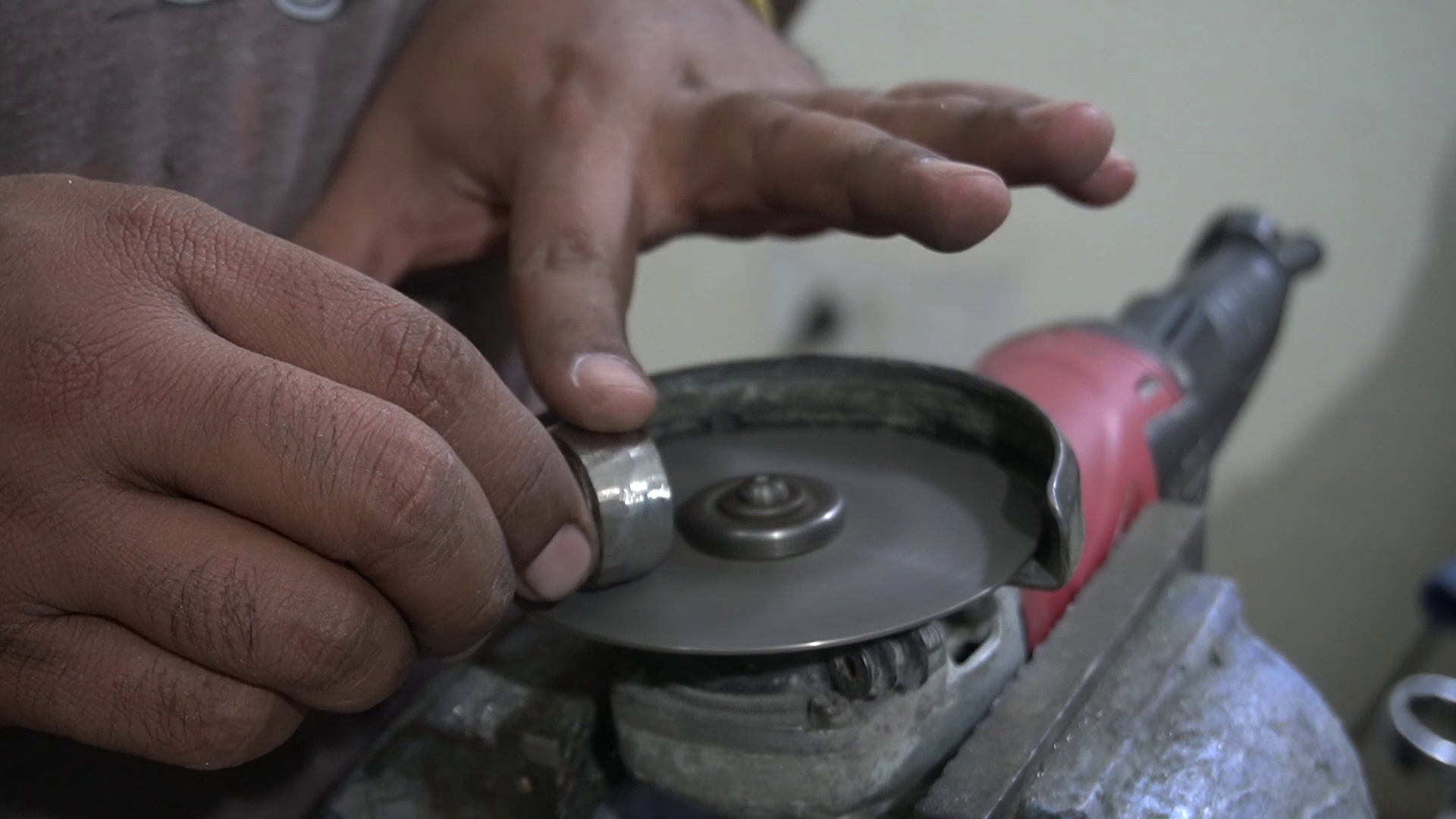






To adjust the stroke of the hammer inside the cylinder I need a nut and lock nut. For that, I am using two nuts of M20. Definitely, the nut is a lot bulkier but using it will reduce some amount of work and we can always thin it down when we needed. To reduce the bulk of the material from stainless nut I used a hand file and angle grinder. For the lock nut, I need a thin nut that's why to attain that I cut down the nut from the center and then shape it with an angle grinder and file by holding it into another bolt which helps a lot to finalize the shape. After that, I hold both the nuts onto the cylinder and then sanded them down to make them more even. Along with this I also sand down the barrel to remove scratch marks and make the surface smooth.
Making the Piston









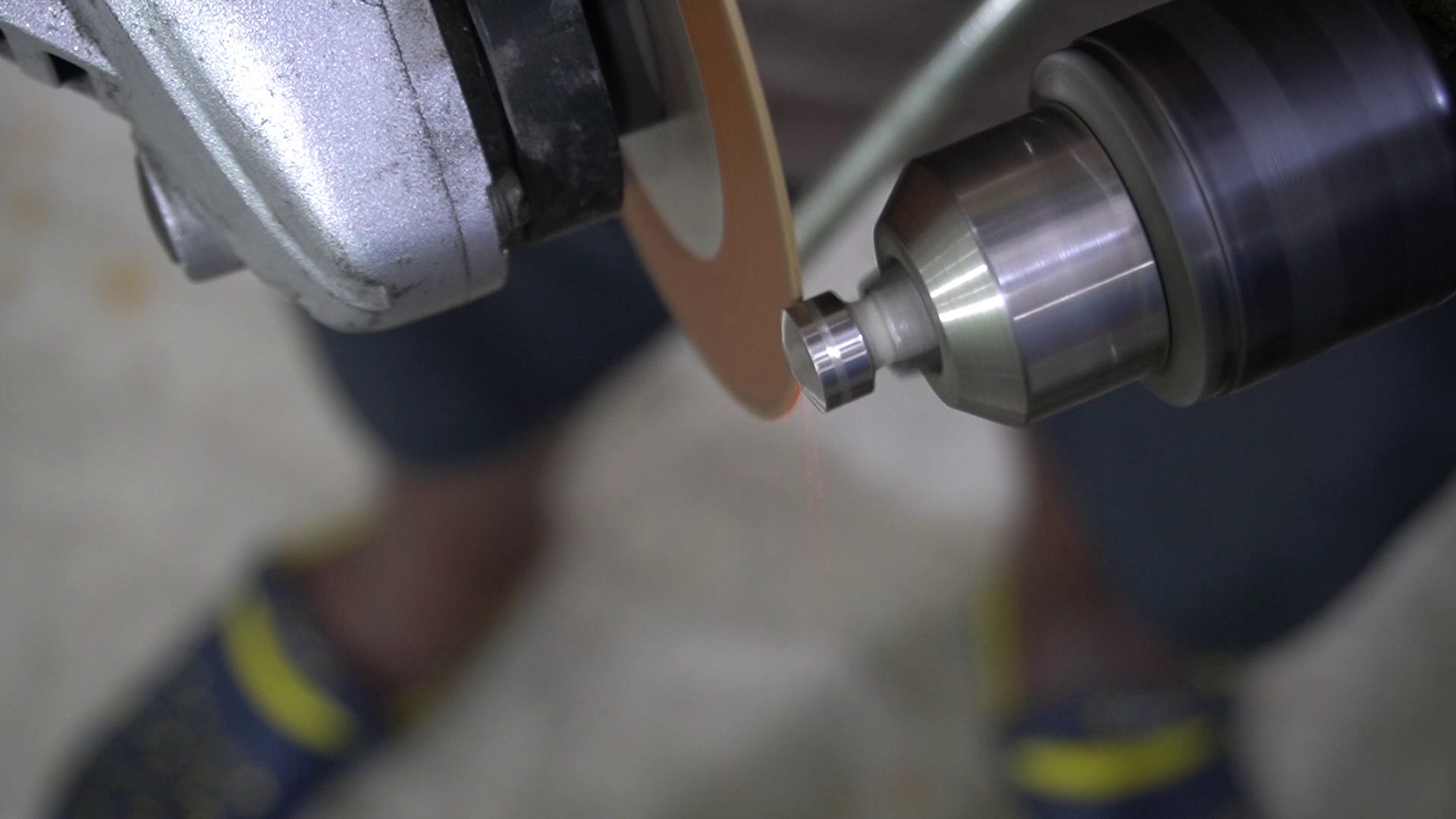
Once the barrel or cylinder has been completed i started the work onto the hammer or the piston. Since I drilled a 12mm hoke in the bolt that's why I used 12mm HSS blank to make the piston because it's very precise and after doing some polishing inside the barrel there is plenty enough space left inside the barrel so that the piston can move back and forth very easily.
I hold the blank in the drill bit and then with the help of an angle grinder start removing the bulk of the material. The weight of the piston should be lie between 5-10gm. After doing the initial shaping I buff the surface to make it smooth. I also made a grove onto the piston which allows a little bit of oil to sit into to maintain a good tight seal in the cylinder wall and the piston.
Graver Holder





For the graver holder, I used a piece of M8 Allen bolt and drilled a 3mm hole because the shank of my graver is 3mm. From there after to hold the graver to its place I drilled a 2.5mm hole for 3mm threads and insert a grub screw that holds the graver to its place during the engraving process.
Constructing the Handle















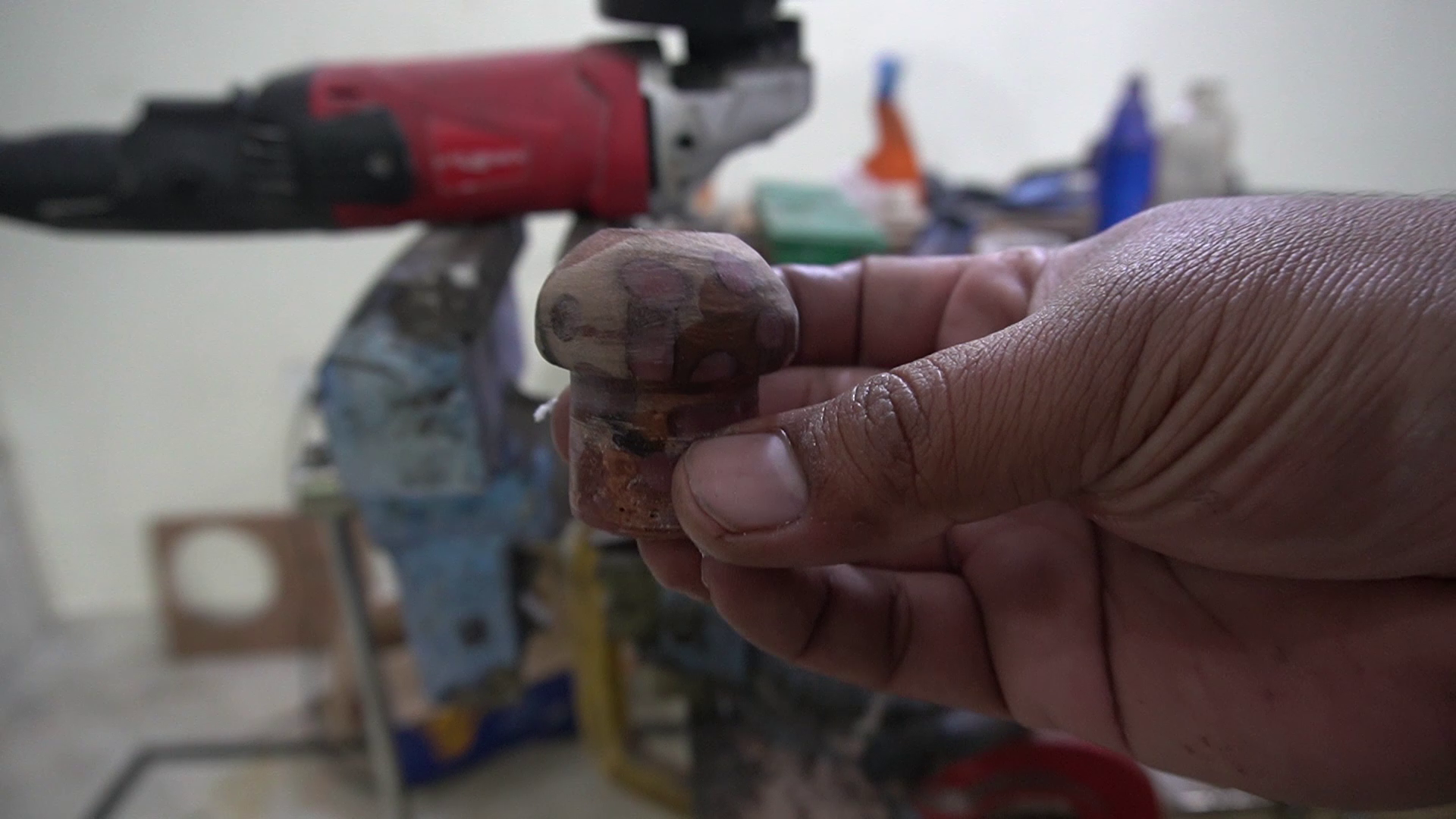












The handle is the most difficult part for me to do. For the handle, I took a burnt piece of wood that I saved from a fire in a hope that I can use it for my knife handle but this project came to mind and the size is absolutely ideal for making a handle for the engraver. I stabilize the wood with the help of epoxy. Then with the help of a hole saw and scroll saw cut the cylindrical blank out of the piece and prepare it for turning. Before turning the handle I need to drill a hole inside this piece and on one side there is an M20 nut that has to be glued and at the back, there is a pneumatic fitting that needs to be installed. Since I drill the hole with a hole saw that's why there is a through-hole inside the wooden blank and that hole help to mount it onto the drill machine to do the turning process. Then with the help of sandpaper, chisel, and other tools and bits, I manage to bring the final shape of the handle.
To glue the nut which I thinned down earlier I made some marks onto it and then with the help of two-part epoxy glued it inside that handle and started the finishing work. I sanded down the surface up to 1000 grit and then with 3M buffing compound bring the piece to a high gloss finish.
Attaching the Pneumatic Fitting to the Back of the Handle


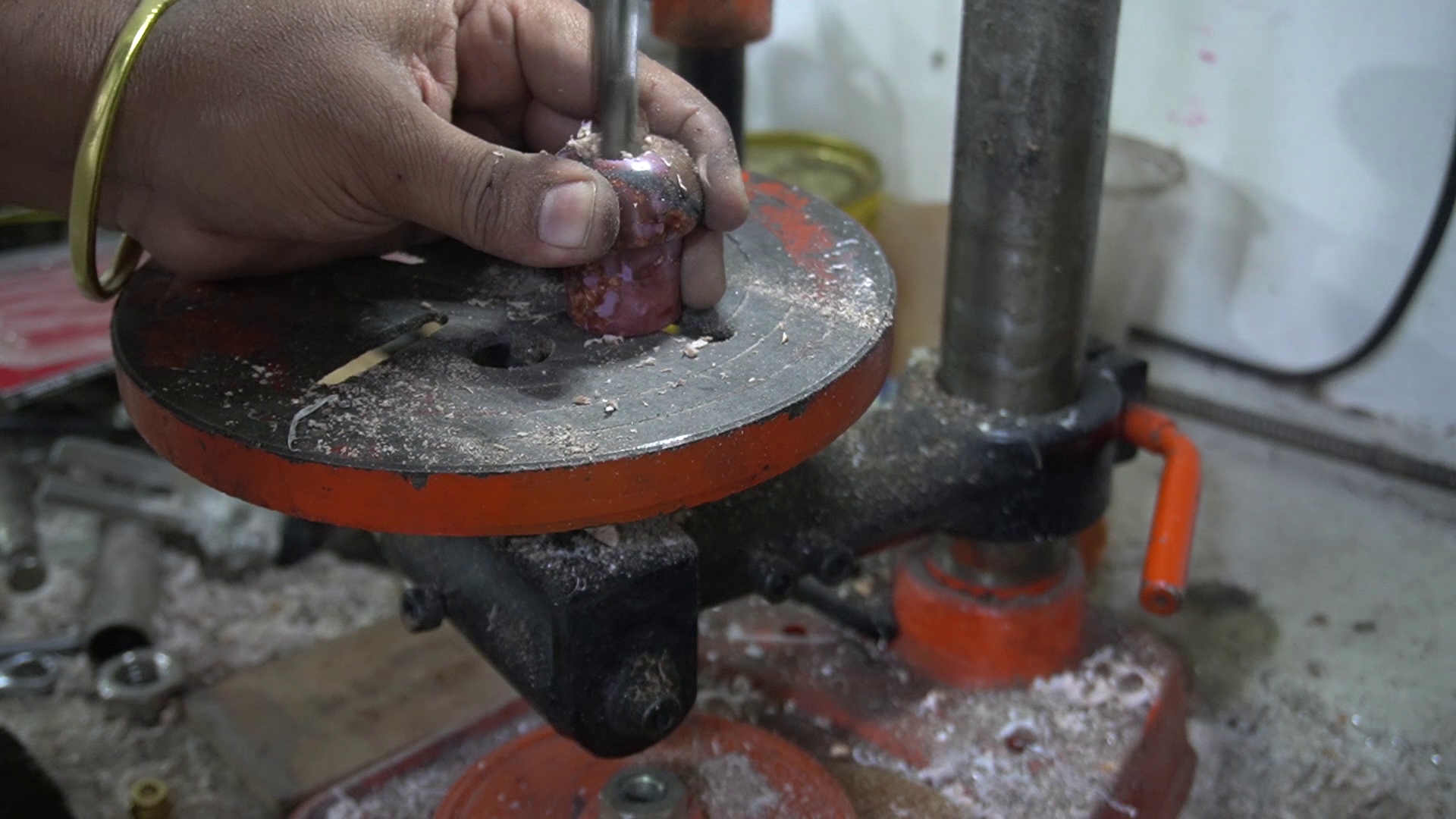



For the fitting, I drilled two different holes one is for the thread and another is to make the hex nut flush into the handle. The thread used in this is 1⁄4 NPT thread and from thereafter attached the fitting over that area.
Buffing and Polishing

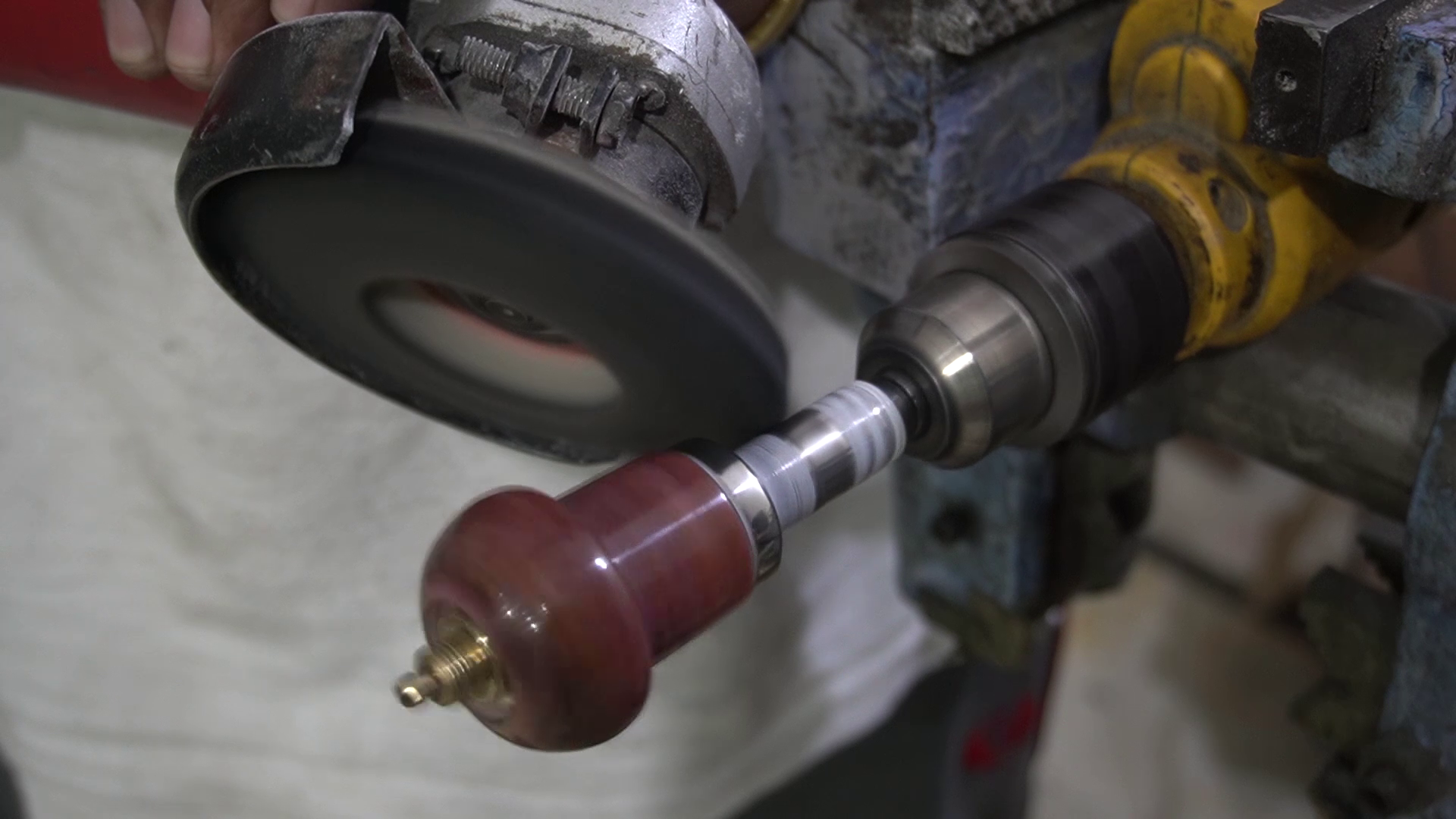

I hold the piece into the drill machine from the threaded side and then start the buffing with the help of an angle grinder. I applied a sufficient amount of buffing compound and then made the entire piece nice and shiny.
Modifying the Car Compressor








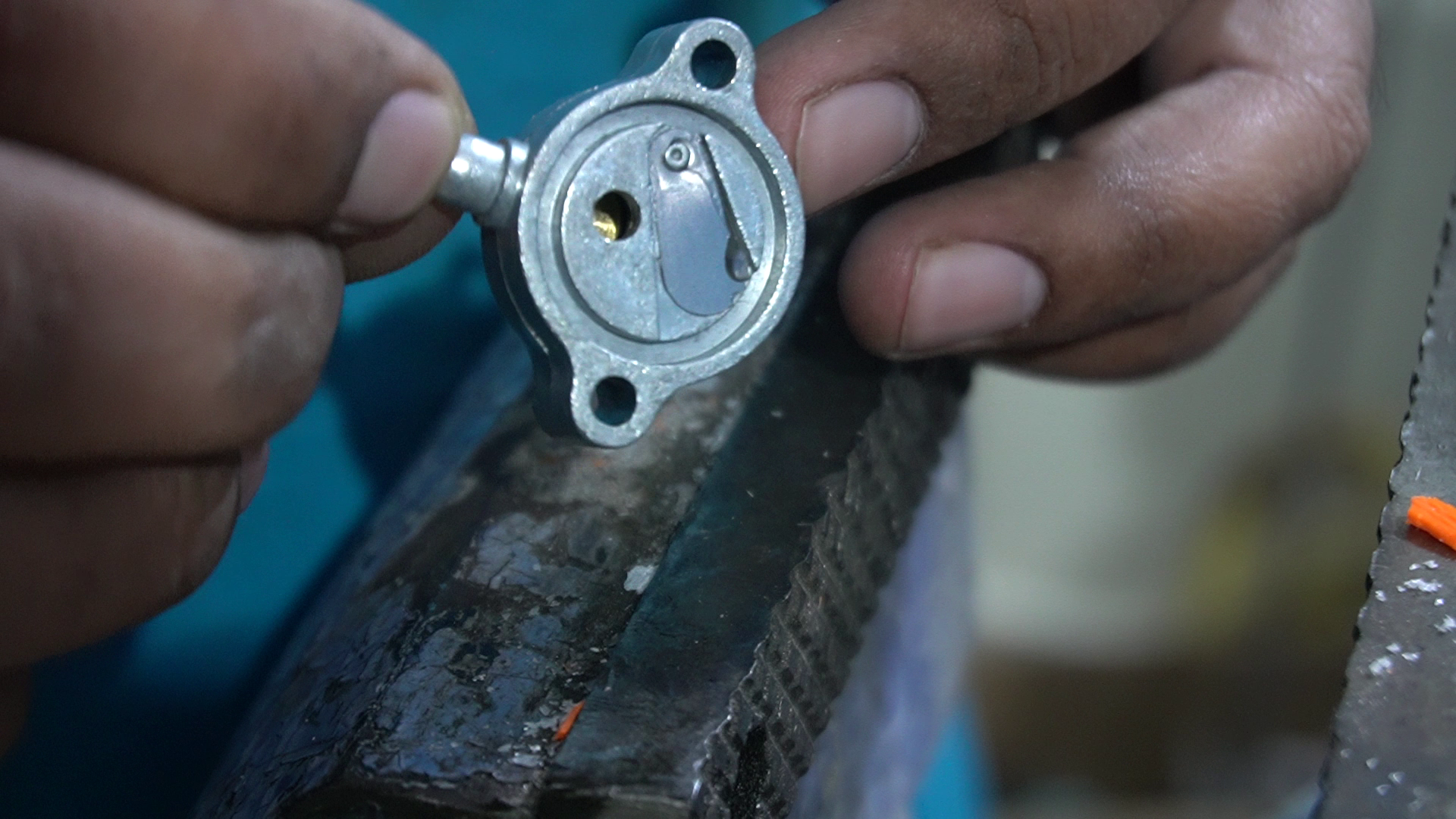


To make this graver work I modify the compressor and to give it custom look I completely redesigned the casing and made my own 3d printed case for the compressor.
These pneumatic gravers are actually of two different types. The one in which both compression and suction take place and the second one in which only compression takes place. The one I made in this Instructables used both compression and suction. To do this there are some modifications that need to be done in the car compressor because a regular ac compressor is a bit more difficult to do. So the first thing I did is remove the outer casing of the compressor. Over the top of the cylinder, there is a flap that lies directly below the hole. The function of that flap is to allow air intake but in the second stroke prevent the air to escape out. Along with this, there is a red color nonreturn valve which we also need to remove and that valve is installed in the exit path of the air. Once you disable these two things your graver is ready to make both upward and downward strokes. The mechanics of a car compressor is rather simple. There is a 12v dc motor connected to a cam which is further connected to a piston that moves up and down to compress air. At the point where the pressure gauge is connected make sure to close that hole as well to avoid air leak. Once all these things have been done I assemble the components and it's ready for use.
One thing which is extremely important while choosing a compressor is the volume. Always make sure that compressor have atleast double the volume of your engraver cylinder. If that was not the case the compression and suction will not takes place.
3d Printed Casing









Once the compressor modification is done I made a design for the enclosure. Inside that enclosure, I made a mount for the fan and motor. Also to increase or decrease the speed I installed a motor governor ( dc speed regulator) with this I am easily able to control the speed of the engraver hammer. There is a fan at the back of the compressor assembly which is used to keep the motor cool during the engraving work. I also made a cavity to install the buttons as well so that I can control the compressor and the fan directly from the housing. Once everything is made I assemble the engraver and it's ready for use.
Finally












Once everything is assembled the engraver is ready to make a sound. I connected it with a 12v power supply and it's ready to make strokes. Believe me, the sound is so satisfying and tells you that you won and successfully able to make the graver. You can clearly see in the video that how easy it is to control the stroke with the help of that adjustment nut.